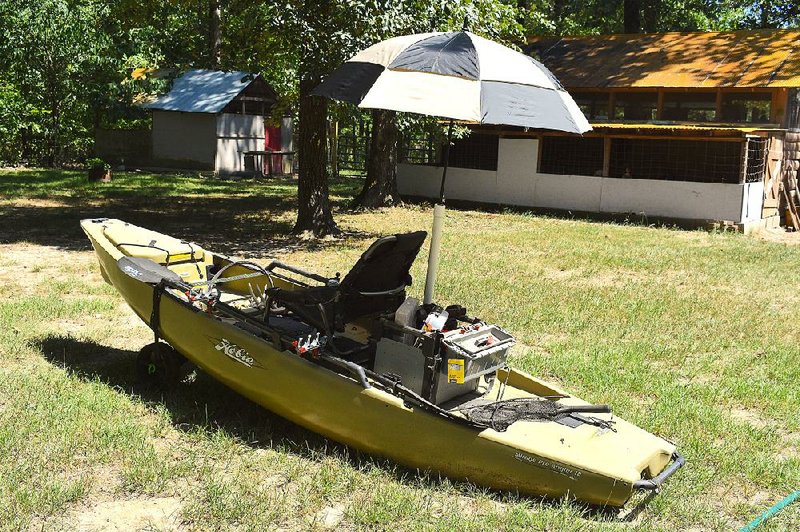Baking in the sun is the hardest part of summer fishing, but it's especially rough in a kayak.
A powerboat creates its own wind for a little relief, but a kayak is like being stranded in a desert. Your only refuge is to wear a big floppy hat and cover yourself with sunscreen, and that's why I avoided fishing open water in a kayak in the summer.
That changed recently with a simple hack that allows me to attach a big golf umbrella to my Hobie.
Naturally, I tried to complicate the process. I intended to build a PVC bracket that would sit in an in-hull rod holder. That rig involved a length of 1 1/4-inch PVC that fit snugly into the rod holder. Of course, the rod holder is at a 30-degree angle, so I had to add a 45-degree elbow for a second length of PVC to hold the umbrella handle more or less over the seat.
The umbrella handle is 1 1/2-inch in diameter, which required adding a 1 1/2-inch expander and a length of 1 1/2-inch PVC to hold the umbrella.
That rig is heavy and inefficient because of the umbrella's awkward, forward-facing angle.
There was, of course, a much simpler solution. It's called a Hobie Crate.
A Hobie Crate is a small box with Hobie H-Rails on all four sides to which you can attach accessories. The interior holds tackle boxes or other gear. The crate also has a 1 1/4-inch diameter vertical rod holders on each corner.
You can do the same thing with the rod holders that come with the milk crate conversion kit offered by Yak Gear.
A 2-foot length of 1 1/4-inch PVC wedges snugly into a rod holder. I added an extender for additional height. The umbrella handle wedges snugly into the PVC. It creates plenty of shade while allowing sufficient room for casting.
Trolling motor drama
My Minn-Kota trolling motor has given me fits all summer, but its unreliability came to a head last week while fishing on the White River with Ray Tucker.
Troubles began in May when Tucker and I fished a private reservoir near Cabot. The motor quit, and we finished the day with Tucker and I taking turns sculling the War Eagle.
A 40-amp fuse had blown. I bought a box of fuses and put them in my battery box.
Before launching at the Sylamore Access on the White River, I tested the motor. It ran fine.
I had worn my life jacket all day, but I finally removed it because of the heat. I sat on it as we motored downstream. I shifted positions, and the motor died. That's disconcerting when you're in a river swollen by intense hydropower generation, and I tried frantically to restart the motor.
"Check the kill switch!" Tucker yelled from the bow.
There was no kill switch. It was attached to my lifejacket, which bobbed in the water about 70 yards upriver.
No problem, I thought. I'll just use the trolling motor to retrieve the life jacket.
I stepped on the pedal, but the motor didn't respond. I switched settings. Nothing.
"Fuse must have blown again!" I shouted.
I had to shout because Tucker was laughing too hard.
Now I was really disconcerted.
A paddle was the only means of propulsion remaining, but I quickly discovered that I couldn't paddle a big War Eagle boat upstream against six hydropower generators. I could, however, hold it steady long enough to intercept the life jacket as it floated downstream.
The motor had a short circuit, probably in the head. Wire insulation can can degrade and shrink in such an old motor leaving portions of bare wire. If one touches metal, the fuse will blow.
I removed the cover and found the wiring in pristine condition.
Shorts are almost always be at a terminal or junction. The only junction is at the fuse. I unwrapped half a mile of electrical tape from the fuse junction and there it was. Butt connectors on both wires had melted, and bare wires pressed together.
I rewrapped each wire independently with electrical tape and inserted another fuse. It works like new.
I'm done with the old vest style life jacket. I replaced it with an inflatable model that's more comfortable to wear.
Sports on 07/01/2018
